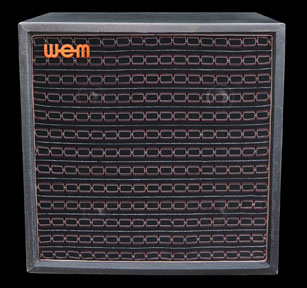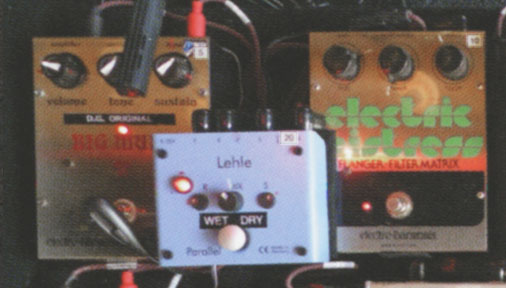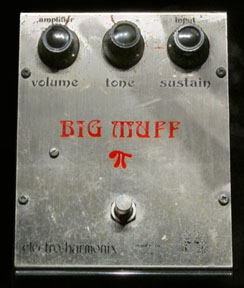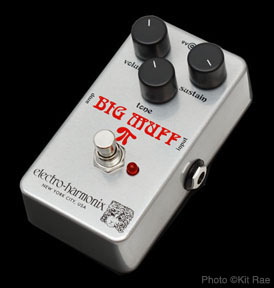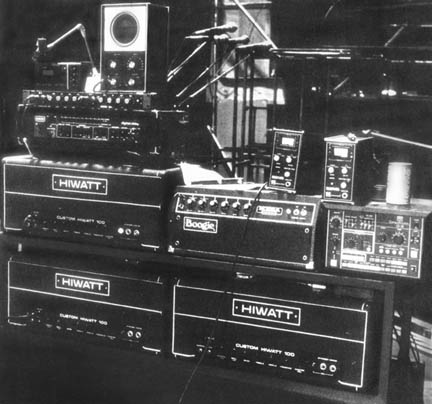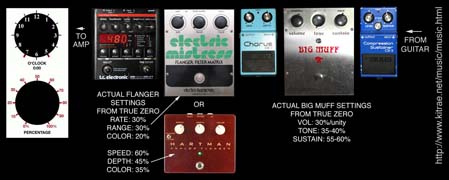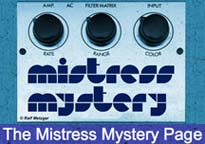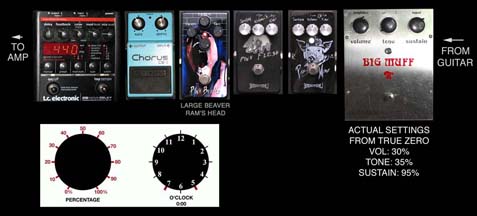NOTE: This website is frequently updated. Last update May 2022
For my setups and sound clips CLICK HERE
..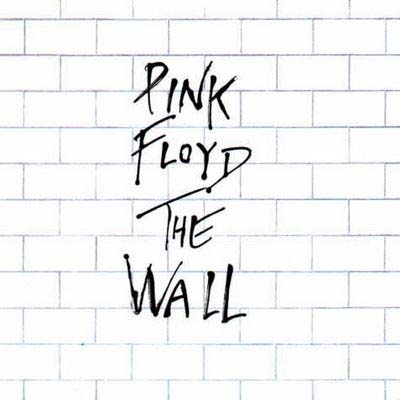 ....
....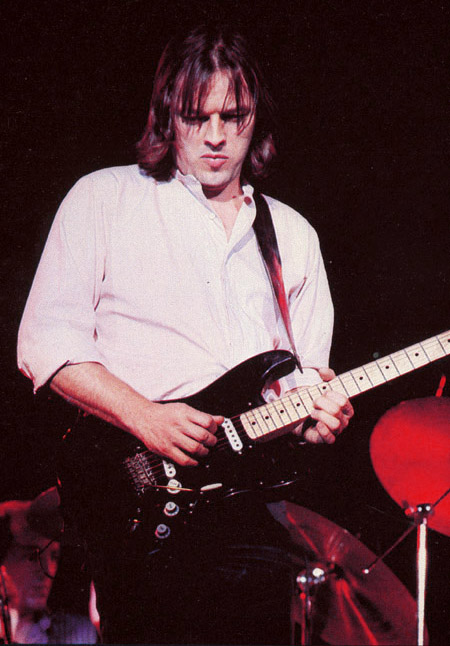 ..
..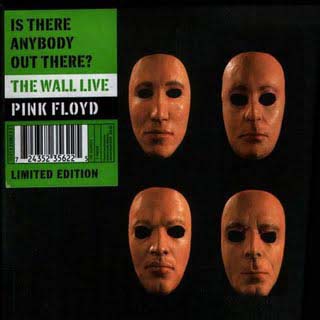 ..
..
The Wall studio album cover, Gilmour with his Black Strat in 1980, and the live Is There Anybody Out There? CD cover art
THE GUITAR TONES OF PINK FLOYD'S COMFORTABLY NUMB - Comfortably Numb is one of the stand out tracks from Pink Floyd's 1979 double album, The Wall, and one of the last great collaborations with his former band mate, Roger Waters. It has become a standard of classic rock radio, and a staple for Gilmour's Pink Floyd live concerts, as well as his solo concerts, and those of Waters. The two guitar solos by David Gilmour in the studio version of Comfortably Numb from Pink Floyd's The Wall album are among the finest examples of guitar soloing in rock history. The guitar tone is considered by many, including me, to be one of the most incredible tones ever put on record. Numerous guitarists have cited those solos as the reason they took up playing the guitar. This song also what originally inspired me to learn to play guitar, and what got me hooked on Pink Floyd in the first place. Suffice it to say, this website and BigMuffPage.com would not exist if it were not for that song.
Gilmour's first solo is elegantly composed and fluidly dances around the chord progression of the chorus. The second solo is a tour de force of David Gilmour's incredible blues based playing and songwriting that takes you on an emotional journey - considered by many to be his finest solo. This article is all about how that tone was created, how to create a similar tone in your own rig, and detailed information about the writing and recording of the song. There is very little documentation about the the 1979 recording sessions or the exact geart used for The Wall, but there is some information about this song, and the rest can be extrapolated from the known gear David was using prior to and after The Wall. There is also a good article about all The Wall studio and live gear over at Gilmourish.com.
Below are reference sound clips from the official release versions on CN. It is well worth purchasing each of these Pink Floyd albums and DVDs just to have every official release version of Comfortably Numb, as all are very different.
FIRST SOLO - from The Wall studio album 1979. I have a page with clips about the first solo "wet" tone and modulation here.
OUTRO SOLO - From The Wall remixed and expanded. Same as the studio album, but slightly longer and with slightly heavier modulation from David's RA-200 rotary speaker cabinet
OUTRO SOLO - From Is There Anybody Out There?, live performances from 1980-1981 (released in 2000)
OUTRO SOLO - From The Delicate Sound of Thunder, live performances from 1987-1988

Gilmour's Black Fender Stratocaster - 1969 body with Charvel 21 fret custom maple neck and DiMarzi FS-1 bridge pickup used for The Wall studio recordings
THE GUITAR - According to David and his backline tech, Phil Taylor, he used his famous Black Strat for the Comfortably Numb solos on The Wall recordings and in the original live concerts. It was a late '60s model strat with an alder body and a 21 fret maple neck. It was fitted with a DiMarzio FS-1 bridge pickup and stock Fender neck and bridge pickups. The FS-1 was a rather hot sounding pickup and gives the distortion in the solos a nice clarity.
Its probably been on more Pink Floyd tracks than any other guitar. The neck's changed a few times, as I used it as a sort of test bed for all sorts of things. It's on 'Money,' it's on 'Comfortably Numb' - the solos on 'Comfortably Numb' - it's on 'Shine on You Crazy Diamond.' The four-note bit at the beginning of 'Shine On' fell out of that guitar one day. - David Gilmour in 2019
One of David's Custom Hiwatt 100/DR103 amplifiers and a WEM Starfinder Super 200 4x12 speaker cabinet loaded with Fane Crescendo 12A speakers
THE AMPLIFIERS AND SPEAKER CABINETS - Although David was known for using high powered Hiwatt amps and Leslie type rotary speaker cabinets in his live rig, in a 1979 interveiw just prior to recording The Wall, David said he used smaller amps in the studio, usually a Fender Twin Reverb or a Mesa Boogie amp. However, according to various sources, including The Wall producer Bob Ezrin, the Comfortably Numb solos were recorded with a Hiwatt setup similar to his live rig. He played through a combination of two 100 watt Hiwatt DR103 heads into WEM Super Starfinder 4x12 speaker cabinets loaded with Fane Crescendo speakers, and an Alembic F-2B preamp (Fender Dual Showman/Twin Reverb style preamp) running into two Yamaha RA-200 rotating speaker cabinets. Each was miked independently and mixed together in stereo. David had just used a two-Hiwatt/two-Yamaha rig prior to this for the Animals 1977 tour. He also used Hiwatts and Yamahas for his 1978 solo record.
David Gilmour’s classic guitar solo on “Comfortably Numb was cut using a combination of the guitarist’s Hiwatt amps and Yamaha rotating speaker cabinets - The Wall producer Bob Ezrin
The RA-200 was a combo amplifier with a 100 watts powering three rotating speakers in the top of the cabinet, and 200 watts powering four 12" speakers in the bottom. I can only use either the rotary or the 4x12 independently in my older model RA-200, not both at the same time. Other RA-200 owners have told me their units switch between the rotary speakers or the rotary+4x12. I think David's RA-200s likely worked that way as well, but he was using these primarily for the rotating speaker effect, which a warm and lush modulation to his tone. The RA-200 sound was different from a Leslie rotary sound. Leslies use a rotating horn for the high speaker, and a rotating baffle for the low speaker, creating a doppler 'rise and fall' effect as each rotated. The Yamaha had three identical rotating speakers, and while each rotated at the same speed with an adjustable speed control, the three speakers were out of sync, so the rise and fall of the doppler effect was more random than a Leslie. An approximation of the sound in an effect pedal is something like an Electro-Harmonix Deluxe Electric Mistress mixed with a Boss CE-2 chorus and a Boss RT-200 rotary speaker simulator, although no pedal sounds quite like standing in front of an RA-200.
Shown above (left) David Gilmour's 2016 tour pedal board with his original 1974 Big Muff, with red LED added and DG ORIGINAL label.
(middle) Another Cornish modified Big Muff displayed at Pink Floyd's Their Mortal Remains exhibition in 2017.
(right) Electro Harmonix Ram's Head Big Muff reissue, a sonic replica of a vintage 1973 V2 "violet" Big Muff.
THE BIG MUFF - At the core of this tone is David's original "Ram's Head" Big Muff, also known as a V2 Big Muff. There are many theories about exactly how this tone was achieved in the studio, but there is no doubt that the primary element for the tone is the Big Muff. I have a huge section about Big Muffs HERE, and details on Gilmour's Ram's Head HERE. Phil Taylor, David Gilmour's guitar and gear tech, had this to say about David's Ram's Head Muff -
I introduced David to the Electro-Harmonix Big Muff Pi in 1974. He liked it, and he has continued to use one ever since. David has tried many of the different incarnations and models over the years, but his original has often been preferred for most things. Finding another that sounds the same is not easy, I have even placed six in a row that externally appeared to be identical to his original, and they all sounded different. Often, when you look inside, some components and values are different... Phil Taylor - David Gilmour's backline tech
BOOST? - For the studio version, the Big Muff may have been blended/boosted by a Mesa/Boogie Mark I used as an overdrive, a Colorsound Power Boost or a Pete Cornish ST-2 treble/bass booster, which is a modifed Colorsound Power Boost clone. David likely had all of those in the studio, but there is no way to know if he combined this with the Big Muff. The "boost" that I refer to here is not a volume boost, but more of a combination of the Big Muff and and an ovedrive, used to create a smoother or dirtier tone, depending on its position in the signal chain and settings. Here is a section about boosting Big Muffs.
Some sources say David used an Orange Treble & Bass booster for The Wall in 1979, including the comprehensive Fitch and Mahon book, Comfortably Numb. Orange was a small company making pedals in the early 1970s, but they never made a "treble & bass booster." This myth appears to be someone mistakenly interpreting Phil Taylor, Gilmour's gear tech, stating that David used an "orange treble and bass booster" in 1979. That was just a literal description of the Colorsound Power Boost , which was a bright orange colored treble and bass booster made by Sola Sound in the early 1970s. David had been using one since 1972. Some sources say that David had Pete Cornish replace the Power Boost, with the Cornish ST-2 (a refined Power Boost clone) in his Cornish custom effects board just prior to The Wall recordings. My opinion is that no booster was used with the Big Muff.
(left) David's Yamaha RA-200 rotary speaker cabinet, and (right) the three rotating speakers in the top of the RA-200
THE MODULATED TONE - Modulations are effects that modify your guitar signal by passing it through filters that double, delay, or modify the waveform with some type of oscillation or frequency variation to create depth and space in your guitar tone. Chorus, phasers, flangers, tremolos, vibes, and rotating speakers are all types of modulation. The modulation you hear on the two Comfortably Numb solos is likely a mix of two different effects - an Electro-Harmonix Electric Mistress flanger and the Yamaha RA-200 rotary speaker cabinets. David used a similar setup for Pink Floyd's previous album, Animals, and for Roger Waters' follow up to The Wall, The Final Cut.
The three rotating speakers in the Yamaha produced a swirling, liquidy doppler effect that added space to the tone, similar to a flanger and chorus. Bob Ezrin, co-producer of The Wall, stated in 1993 that Comfortably Numb was indeed cut using a combination of the guitarist's Hiwatt amps and Yamaha rotating speaker cabinets, but there is practically no information about what other effects were used on the song. David had an 18v Electric Mistress flanger in his pedalboard used for recording The Wall, and I think I think he used it for the second CN solo. He used the Mistress on the 1977 Animals tour and on his first solo album in 1978, just prior to recording The Wall. He also used a Mistress for the live performances of The Wall, along with a Boss CE-2 chorus, and the Yamha RA-200.


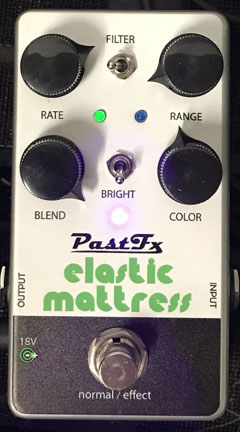
two of David's vintage 18v Electric Mistress flangers, and the Past FX Elastic Mattress flanger
The Mistress was among the first flanger effect pedals made, and it had a very unique sound. The original 18v version that was made from 1976-1981 is very rare and expensive due to the fact that the SAD 1024 BBD chip that was responsible for a big part of its sound is no longer made. There are modern sound-alike flangers that work very well to replicate the unique Mistress sound, like the Past FX Elastic Mattress and Retro Sonic Flanger. I have owned several original Mistresses and the Past FX is my favorite modern replica.
The modulation in The Wall live concerts was very dominant in the mix. It was a blend of the the Electric Mistress, Boss CE-2 chorus, and swirling Yamaha rotary speakers. Below is a live clip with that setup from 1980. The swirling Yamaha rotating speakers are very present in the tone, and very different from the studio version.
OUTRO SOLO - From The Wall live 2/28/1980
 ..
..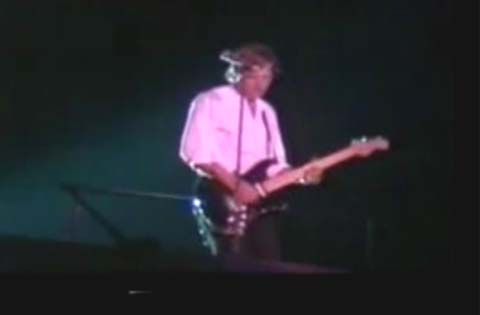 ..
..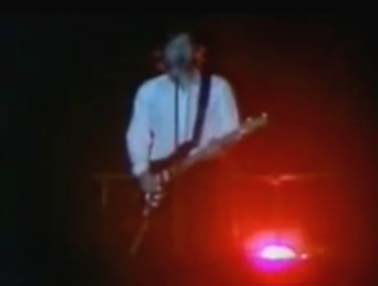 ..
..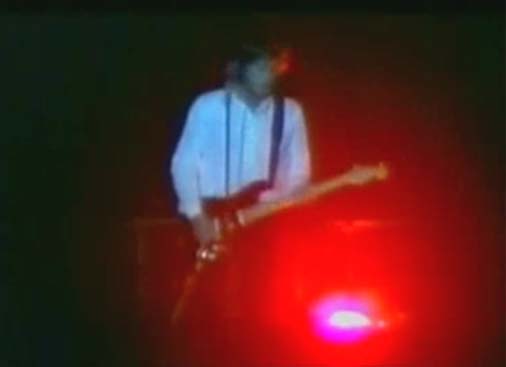
David performing Comfortably Numb high on top of the wall in one of the original live performances
.....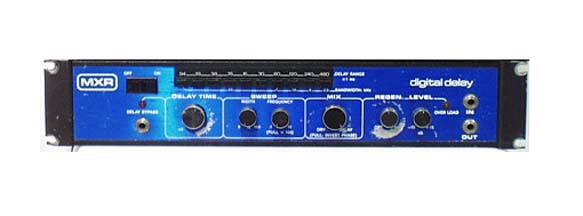
MXR Digital Delay System rack unit
DELAY - It is hard to hear a clear delay echo in the final studio mix of the song, but it is there. Listening to the dry track from the 5.1 surround mix, the delay appears to be 480 milliseconds long, with two or three repeats. If the delay was recorded live, it was likely mixed with the dry signal, or was simply sent to a separate "wet" amp when recording. The delay may have been added in post, at the mixing stage, but David usually recorded his delays live. He had a rack mounted MXR Digital Delay System 1 in the studio, which is likely what was used in the recording sessions. He also used one for The Wall live concerts. It is a very warm sounding delay, close in sound to David's Binson Echorec analog delay.
REVERB? - In a 1979 interview with David for Guitar Player just prior to recording The Wall it is stated "while it is often rumored that Gilmour dabbles in all manners of studio wizardry, he in fact does very little. He employs both close and far miking to achieve dimensionality in the sound. He views the production of a good guitar sound as a permanent struggle. He looks for a bright tone, but one which embodies a bottom also." Much of the big, ambient hall reverb sound in the song is thought to be studio magic at the mixing board, with compression, EQ, and reverb added later. I happen to think most of what you hear is what it sounded like when it was recorded. The 5.1 mix indicates the solo was recorded relatively dry up close to the cabinets, and also farther away to capture the large room sound. Some may think David used amp reverb, but It does not appear David ever recorded with spring reverb from an amplifier. Amp reverb tends to soak into and alter your tone, and it does not work well with a Big Muff for Gilmour tones in my experience.
THE PLAYING AND RECORDING - The first solo has some unique tonalities that make it difficult to determine which pickup on the Black Strat was used. Most of the notes sound like the bridge pickup on the Black Strat, but a few of the notes have the warm, bluesy tone of the neck pickup. Those notes literally sound like they were played on the neck, but it’s not possible to switch back and forth multiple times from the bridge to the neck and play the solo at the same time. It is possible to get similar tonalities with just the bridge pickup by picking the specific neck-sounding notes directly over the neck pickup, although it is not exactly the same as the neck pickup sound.
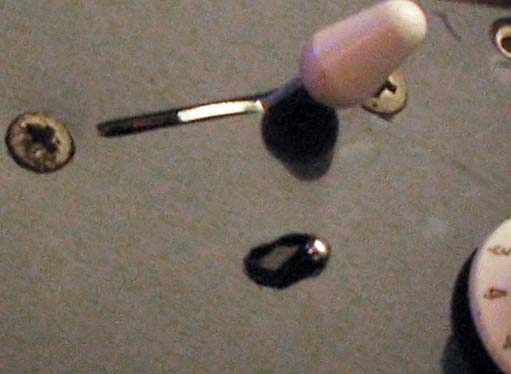
the neck pickup mini toggle switch on the Black Strat
There is a theory that David used the mini toggle neck switch that was added to the Black Strat in December of 1977. The switch increased the range of possible pickup tones by allowing the neck pickup to be combined with the bridge or middle pickup when engaged. Some people think David used the neck+bridge for the solo, but you can’t play the whole solo with just that combination either. There are subtle pick+thumb harmonics on many of the notes in the solo that are easy to play with the bridge pickup, but they are mostly lost with the neck+bridge combo because the two pickups together cancel out most of the harmonics. There is also an interview (Guitar Player January 2009) where David was asked if the neck mini-toggle switch was a staple part of his sound and recognizable on a lot of songs. He laughed and said no, he was not sure if he ever recorded with it.
As most guitarists know, David uses a lot of finger vibrato as well as the whammy bar, often at the same time. On the first solo of ‘Comfortably Numb’ he was exaggerating the effect quite dramatically. I asked if he thought it was too much and he replied, “No, I want it to sound drunk!” And there it was. - James Guthrie, producer/engineer on The Wall - Brain Damage 2013 interview
The first solo in Comfortably Numb was a first take - The Wall producer Bob Ezrin
I think David did something different to achieve the two different pickup tones in the studio recording. His standard way of recording most of his guitar solos was to record several different improvised takes, each recorded to a separate track. He would then pick the best parts from each and combine them into one solo, mixed down into one track, as he did with the second Comfortably Numb solo. The first CN solo was not written this way however. David wrote the whole solo in advance and learned it. It was was played nearly note-for-note the same in one of the early demos. David just re-recorded it for the final song. I have no confirmation of this, but what I think he did was record a take with the bridge pickup and then one with the neck pickup. Then parts from each were used for the final mix, which could be why we have what sounds like the brige pickup in some places, and the neck pickup in others.
The outro solo was mixed together from several takes recorded on a sixteen track recorder. The playing is very fiery, with some fast finger and whammy bar tremolo work in places, and some slight pinch harmonics that happen just at the right moments, all of which add to the intensity of the piece. The best parts of each take were combined into one solo, which was the typical way David created solos in the studio. David, and possibly engineer James Guthrie (various sources say one or the other), mixed them into one solo for the final version.
I just went out into the studio and banged out five or six solos. From there I just followed my usual procedure, which is to listen back to each solo and mark out bar lines, saying which bits are good. In other words, I make a chart, putting ticks and crosses on different bars as I count through: two ticks if it's really good, one tick if it's good and cross if it's no go. Then I just follow the chart, whipping one fader up, then another fader, jumping from phrase to phrase and trying to make a really nice solo all the way through. That's the way we did it on "Comfortably Numb". It wasn't that difficult. But sometimes you find yourself jumping from one note to another in an impossible way. Then you have to go to another place and find a transition that sounds more natural - David Gilmour from Guitar World 1993
In the beginning of the end solo of "Comfortably Numb" there's that note on the seventh fret of the G string - a big harmonic. I always try to start that solo with that sound and play that first line. It seems daft not to - David Gilmour from Guitarist magazine May 2006
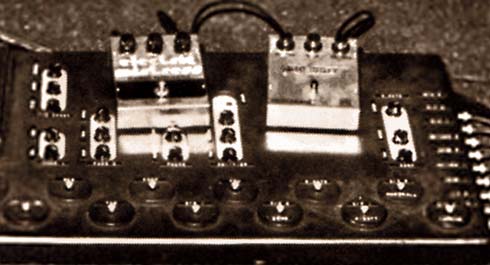
Gilmour's touring "Ram's Head" V2 Big Muff and non-deluxe Electric Mistress in 1977, prior to recording The Wall
Gilmour's back stage rig for The Wall concerts including the Alembic F-2B preamp, MXR Digital Delay, Mesa Boogie MKI amp head used as an overdrive, and Hiwatt DR103 power amps with preamps disconnected.
Gilmour's back stage pedal board for The Wall, featuring a built in Big Muff.
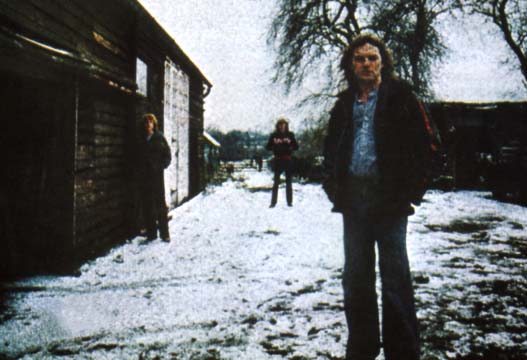
I actually wrote the chord sequence for it while I was in Super Bear doing my first solo album, right at the end. I didn't intend, I mean, I never was going to actually record it then for that solo thing. It was one of the things I'd just put down one day and stored away with my other demos. - David Gilmour in 1984
Comfortably Numb started off as a rough demo created by David Gilmour during the making of his first solo album David Gilmour, recorded in 1977 and 1978. It was just an instrumental idea at this stage, with David strumming some chords on a high strung guitar and humming along with the music. Here is that original demo, recorded in early 1978. It sounds like a phaser or an Electric Mistress is used for the modulation. The vocal melody in the chorus sections is the same as the final song, but the melody in the verse sections was altered quite a bit later.
During the recording of The Wall prducer Bob Ezrin thought an additional song was needed the doctor section of The Wall story line. David brought in this demo and Bob liked it immediately.. Roger wrote the lyrics, but initially, according to producer Bob Ezrin, Roger did not like the music and did not want to include it in The Wall. The song was titled The Doctor at this point and featured very different verse lyrics to the final version.
Roger and I had a good working relationship. We argued a lot, sometimes heatedly - artistic disagreements, not an ego thing. I don't think we argued over who would take lead vocals. Roger was not over-bothered who sang - but overall we were still achieving things that were valid. Things like Comfortably Numb are really the last embers of Roger and my ability to work collaboratively together - my music, his words. I had the basic part of the music done. I gave Roger the bits of music, he wrote some words, he came in and said, 'I want to sing this line here, can we extend this by so many bars so I can do that,' so I said, 'OK, I'll put something in there.' - David Gilmour from a 1999 Mojo Magazine article
Pink Floyd recorded several demos during The Wall sessions in 1979. Below is an early demo with a heavy sounding electric guitar over the verse sections. David preferred it to the lighter final mix with the orchestra. He would later add the heavier guitar when he played this song live, notably heard on the Momentary Lapse of Reason and Division Bell tours. The first guitar solo was already established at this point, and it sounds like a green Electic Mistress was used for the modulation here. The outro solo already has a few phrases that will later appear in the final mix, but it is quite different sounding from the final version. The modulation appears to be a phaser, likely an MXR Phase 90, which was in David's pedal board at the time. There is also either a very short delay, or the track was duplicated with one track running slightly out of sync (ADT or automatic double tracking) with the other, to thicken the sound.
There have been debates over who wrote certain parts of the music, with Roger Waters claiming he wrote the verse chords. Roger and David also each had different ideas on how the final mix of the song should sound, resulting in some heated argument in the studio. Roger, David, and producer Bob Ezrin have all talked about this in various interviews. These can sometimes be contradictory due to memory lapses over the years.
Comfortably Numb started off as a demo of Dave's - a piece in D with a lovely, soaring chorus and a very moody verse. At first Roger had not planned to include any of Dave's material but we had things that needed filling in. I fought for this song and insisted that Roger work on it. My recollection is that he did so grudgingly, but he did it. He came back with this spoken-word verse and a lyric in the chorus that to me still stands out as one of the greatest ever written. The marriage of that lyric and Dave's melodies and emotionally spectacular guitar solo - every time I hear that song I get goosebumps. - The Wall producer Bob Ezrin
What happened is Dave gave me a chord sequence, so if you wanted to fight about it - and I don't want to fight about it - I could say that I wrote the melody, and all the lyrics, obviously. I think in the choruses he actually hummed a bit of the melody, but in the verses he certainly didn't. That's never been a problem for me, I think it's a great chord sequence. - Roger Waters
…I don’t know who came up with the Bm progression (the verse chords). Honestly I don’t remember if that was part of what David had already written or whether that was something Roger appended to David’s part…it doesn’t matter…fog of time. I remember being in the room when he (David) played that for the first time (the demo solos) on our guide track, because we made guide tracks for everything. - Bob Ezrin in 2022
Well, there were two recordings of that, which me and Roger argued about. I'd written it when I was doing my first solo album. We changed the key of the song's opening the E to B, I think. The verse stayed exactly the same. Then we had to add a little bit, because Roger wanted to do the line, "I have become comfortably numb". Other than that, it was very, very simple to write. But the arguments on it were about how it should be mixed and which track we should use. We'd done one track with Nick Mason on drums that I thought was too rough and sloppy. We had another go at it and I thought that the second take was better. Roger disagreed. It was more an ego thing than anything else. We really went head to head with each other over such a minor thing. - David Gilmour from Guitar World 1993
We went to LA with two versions of it - we recorded one backing track, just the drums basically, which Roger and Bob liked a lot but I felt was a bit loose in places so we did another take which I liked better - and we had quite a large row about which of these two versions we should use. In the end, we used bits of both, and I'm not at all sure if you played me one of those backing tracks and then the other one I'd know the difference now, but it seemed incredibly important at the time. You can divide "Comfortably Numb" into dark and light - the bits I sing, "when I was a child..." are the light, the "hello is there anybody in there" that Roger sings are the dark - and on the dark stuff I wanted to have a bit more of the grungey guitar element, while Roger and Bob wanted it just drums and bass and orchestra. We argued vociferously about that and I lost on that occasion, and I still feel I was right. On-stage I would always add the grungier tone. - David Gilmour from a Mojo magazine article in 1999
The first solo in Comfortably Numb, which may be the best solo of all time, is actually a first take. It was so powerful when I heard it and saw him play it, it literally brought tears to my eyes - and it has many time since then - Bob Ezrin in Total Guitar 2022
That solo (the first one) is, in the history according to Ezrin, a first take, and David remembers it the same way...However, I have been chastised by James Guthrie, who is very cross with me because apparently I’m stealing his thunder (Total Guitar misquoted Bob that the second solo was a first take, but Bob meant the first). Actually it (the second solo) was done over several takes in France while I was in Château Miraval with Roger. He (James) was the one that recorded it. It doesn’t matter. What matters it that it’s the best guitar solo I have ever heard. Par none. How many great guitar solos can you sing? I mean you can sing this one. - Bob Ezrin in 2022
Examining the 5.1 mix of the tracks used for the film version of The Wall, the elements I hear in the outro solo are artificial double tracking, modulation, delay, a second guitar playing chords, and a synthesizer playing the root notes under the chords. It seems it was standard procedure to record from a "dry" amp and separate "wet" amp when solos were recorded. Much of the film soundtrack was created directly from the original studio tracks recorded for The Wall album in 1979. The dry amp would have little or no effects, or just modulation, and the wet amp would have delay added. The wet effects could have simply been added in post, but I know Gilmour sometimes records wet from interviews, so I think there there were likely always two amps being recorded. I have found the same thing with the 5.1 mix of Gilmour's On An Island CD. Even the live Remember That Night and Live in Dgansk DVD 5.1 audio sounds like a dry track was recorded there as well. Having the dry track gives more options in the mixing room later.
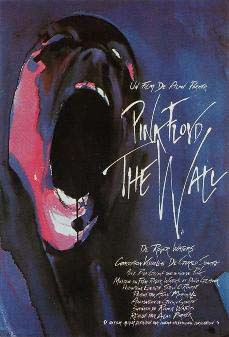
FIRST SOLO - Dry track - From the 5.1 surround sound mix from The Wall film soundtrack.
OUTRO SOLO - Wet track. From the 5.1 surround mix of The Wall film soundtrack
OUTRO SOLO - Dry center track mix. From Remember That Night DVD 5.1 surround mix
Most of The Wall solos have modulation, and there is definitely heavy modulation in the 5.1 movie soundtrack mix. I did not expect it to be this heavily modulated as I do not hear it clearly in the wet final mix, but it is there and it sounds like the Yamha rotating speakers, not an Electic Mistress, although both can sound similar low in the mix. As stated by producer Bob Ezrin, this tone is likely a mix of the Yamaha rotating speaker cabinet and a Hiwatt amplifier. This solo also appears to be artificially double tracked (ADT) on the album mix, and the ADT is even more evident on the film soundtrack version. Simply, ADT means the track was duplicated and played slightly out of sync with the original track to give it a thicker sound, almost like a very short slapback delay.
Another key to the second solo tone is the chord progression played under the solo on an electric guitar with distortion, possibly from a Fuzz Face or Power Boost pedal. It fills out the space and makes the solo sound larger. There is also a bassy Prophet 5 synthesizer, played by David Gilmour, thickening the bass guitar notes played under the chords that really impacts the ominous feel of the solo. Here are some interesting breakdowns of the tracks, extracted from the 5.1 sourround mix created for The Wall film.
Compare The Wall film version to the original album version of Comfortably Numb and you will find the solos are mixed more up-front in the film version, with more apparent artificial double tracking. Here is a mix of the 5.1 version, with full, dry, keyboard, and wet tracks islolated, to illustrating those elements.
Here are a few other interesting extractions from the mix.
SYNTHESIZER - Prophet 5 synthesizer played by David Gilmour under the outro solo
ORCHESTRA AND SCREAM TRACK - The orchestra and "scream" sound effects tracks from the second verse
GETTING THE TONES - Here are my suggestions for getting the Comfortably Numb outro solo tone. I have a page about the first solo tone HERE.
Getting the basic tone is nothing terribly complicated with the right gear, but understand getting close the exact album tone without using a real Yamaha RA-200 rotating speaker cabinet blended with the Hiwatt/WEM speaker cabinet setup is not going to be easy. Start with a vintage sounding Triangle or "Ram's Head" Big Muff, or a clone, a chorus or chorus-like modulation, and a delay. David has changed the tone over the years when playing these solos live, but at the heart is almost always a Big Muff. It's almost cliche to say this, but majority of his "tone" does come from his fingers and playing. You really need to invest the time to learn his playing techniques. You can have David's exact gear, but you won't get the tone if you do not not examine and learn to play in this style. Study his solos, the subtle phrasing, smooth note bends, and subtle pinch harmonics and tonal variations done with his pick and thumb. The thumb affecting the tone when picking the string is key to much of the note coloring, not the gear used. Much of what people think is the gear making the playing sound good is simply the fingers making the gear sound good.
Finger and whammy bar tremolo is extremely important. Gilmour's tremolo speed usually matches the song tempo. It is very smooth and David can go from finger tremolo on one note to whammy bar on the next, and sometimes he switches in the same note! David never lets a note just sit still. It is always moving or changing. Big Muff's tend to be a bit harsh and fizzy, but when you add some fluidity and pick harmonics to your playing it brings something out of the Muff that you can't get with any other distortion pedal. Add a sweet modulation and some long delay over that and you are in tonal heaven.
MY COMFORTABLY NUMB CLIPS - Here is my basic setup to recreate the studio tone for the second solo, in the correct signal chain order. This setup also works for most of the other guitar solos from The Wall album. I use a modulation pedal in place of the rotating speaker cabinet. For these clips I use either the Boss CS-2 or and Electric Mistress/Hartman Flanger. Since a big part of this tone is the artificial double tracking and large hall reverb sound created in the mixing stage, I have attempted to replicate these effects in a rather simple fashion using Garageband. The dry clips with modulation illustrate what the raw tone should sound like without those effects of the final mix.
SIGNAL CHAIN
Fender Stratocaster with Seymour Duncan SSL-5 bridge pickup
Boss CS-2 Compressor - set for a light compression
"Ram's Head" Big Muff by Electro-Harmonix - this is a vintage Muff from 1973
Boss CE-2 chorus or Electric Mistress - I demo both below
TC Nova Delay - set for a light 480ms delay
Fender Twin Reverb and Reeves Custom 50 (Hiwatt replica) amplifiers - from stereo outputs of the TC Nova delay to each amp
SOUND CLIPS
OUTRO SOLO - Dry tone with Boss CE-2 Chorus modulation
Same with ADT to thicken the sound
Same with 480ms delay and room reverb added to simulate the final studio mix tone
OUTRO SOLO - Dry tone with Electric Mistress modulation
Same with Arificial Double Tracking (ADT) to thicken the sound
Same with 480ms delay and room reverb added to simulate the final studio mix tone
![]() Comfortably Numb outro solo - Strat with Seymour Duncan SSL-5 bridge pickup. Ram's Head Big Muff into a Past FX Elastic Mattress, Future Factory delay (450ms +300ms), Ambi Space plate reverb, Reeves Custom 50 into a Hi-Tone Eclipse cab, Yamaha RA-200 rotary speaker cabinet
Comfortably Numb outro solo - Strat with Seymour Duncan SSL-5 bridge pickup. Ram's Head Big Muff into a Past FX Elastic Mattress, Future Factory delay (450ms +300ms), Ambi Space plate reverb, Reeves Custom 50 into a Hi-Tone Eclipse cab, Yamaha RA-200 rotary speaker cabinet
![]() Comfortably Numb outro solo - Yamaha RA-200 speaker cabinet only
Comfortably Numb outro solo - Yamaha RA-200 speaker cabinet only
![]() Comfortably Numb Outro solo Tone Building - Reeves and Bassman amps first, then Yamhaa RA-200, then all combined.
Comfortably Numb Outro solo Tone Building - Reeves and Bassman amps first, then Yamhaa RA-200, then all combined.
BIG MUFF - A good Ram's Head Big Muff, early V3 Big Muff, or Civil War Big Muff are the ultimate pedals for this tone. For The Wall studio recording tone use a Ram's Head type Big Muff or a boutique replica, and for the Delicate Sound of Thunder and Pulse era tones use a Civil War or green Russian style Big Muff or replica. There is a "magic" area for the Gilmouish tone knob setting on a Muff, and that is around 35-40% /10:30-11:00 from true zero. It will vary depending on how much sustain is dialed in on the Muff, and how bright your amp and other gear is set. There are other pedals with Big Muff based circuits that work as well, such as the Stomp Under Foot Violet Ram's Head or Civil War fuzz, Pete Cornish P-1, Pete Cornish P-2, Skreddy Pink Flesh, Skreddy Pig Mine, Blackout Effectors Musket, MJM Foxey Fuzz, BYOC Large Beaver, and numerous others. The ProCo Rat is an alternative to the Big Muff sound, though not an accurate sunstitute. Something like the Boss DS-1 is a bit too thin to get close to that tone. A modern USA reissue Big Muff, Little Big Muff, or Tone Wicker Big Muff can be used, though I find they are not as dynamic for this particular type of solo as most vintage style Big Muffs. My top pics are my real 1973 Big Muff, Stomp Under Foot VRH, MJM Foxey Fuzz, or BYOC Large Beaver triangle spec. At various times, David has used a vintage Ram's Head Big Muff, a Pete Cornish P-1 Ram's Head Muff clone (prior to The Wall recordings and in 2006), a Pete Cornish P-2 modified Muff clone, a Sovtek "Civil War" Big Muff, and in 2006 an old Traingle Big Muff.
COMPRESSION AND BOOSTING - I always like to add some compression from a Boss CS-2 compressor/sustainer with my Big Muffs to punch up the clarity and smooth the Muff fizz out. An MXR Dynacomp also sounds good with a Muff, but I think the CS-2 is the best combo. Some people also like to lightly boost their Big Muff with a driver like the Colorsound Overdriver or BK Butler Tube Driver. David Gilmour has done this live and he may have used a booster in the studio. I get a remarkably similar tone to Comfortably Numb when adding the Colorsound with drive at 90% before the Muff with its sustain at about 45%. I also get the Muff to sound very close by itself, simply by turning the sustain up to around 80%. The Civil War and green Russian Big Muffs sound really good with a Tube Driver on low boost placed before the Muff for a smooth distortion, or after it for more attack and dirt. David has used the Dynacomp, CS-2, and Demeter Compulator for compression throughout his career. For boosting he has used the Colorsound Power Boost, Colorsound Overdriver (similar to the Power Boost, but more gain), Pete Cornish ST-2 (Power Boost/Overdriver clone), B.K. Butler/Chandler Tube Driver, and later B.K. Butler Tube Driver.
MODULATION - David's Comfortably Numb tone is almost always modulated, starting with what was likely rotating speakers in the original studio recording, then a flanger/chorus/rotating speaker mix, then a chorus only, and in 2006 Gilmour stopped using modulation altogether. I think the Boss CE-2 chorus gives the best modulation to match the light rotating speaker effect of the studio album tone. The Hartman Flanger also works well for a more dominant modulation. I typically run the CE-2 and Hartman to a separate amp, but for the clips below I use a loop mixer to mix the modulation about 60/40 with the original signal. For the really heavy live Wall era modulation, the old green 18v Electric Mistress, Hartman Flanger, or a Deluxe Electric Mistress should be used in conjunction with a Boss CE-2 chorus, or if you have one, a rotating speaker cabinet. The various modulated effects David has used live throughout the years are:
•Yamaha RA-200 rotating speaker cabinet - The Wall studio recordings and live 1980/1981 - a very dominant effect unless mixed with an unmodulated speaker cabinet.
•18v green Elecrtic Mistress flanger - The Wall studio recordings. A very dominant effect unless mixed with an unmodulated speaker cabinet. In the settings David used it almost sounded like a chorus.
•Deluxe Electric Mistress - The Wall live tour 1980/1981. Used with a Boss CE-2 and Yamaha RA-200 speaker cabinets.
•Boss CE-3 chorus - About Face tour 1984 - Not the best sounding Boss chorus, but David managed to make it sound good in his rig.
•Boss CE-2 chorus - A Momentary Lapse of Reason and Division Bell tours 1987 - 1994. This is perhaps the best chorus ever made, though it is a very dominant effect. David had a separate amp dedicated for the CE-2.
•Doppola rotating speakers - Division Bell tour 1994. I think this was used with the CE-2 on many songs. The Doppolas were basically heavy duty rotating speakers that created the "doppler" effect of a smaller Leslie speaker, but the Doppolas were larger with more output volume, and more suitable for live use.
DELAY- An essential part of the Gilmour "wet" sound. The studio recording is delay time is approximately 480ms with 3-4 repeats, but low in the mix. The live delay times varied, but generally David liked to use long delays 540-560ms, with around 3-4 repeats. David used the MXR digital delay to simulate the sound of his old Echorec analog delay around the time of The Wall. David typically uses two delays when playing live, with one set to a longer delay time than the other. I have used various digital delays over the years, including the Boss DD-2, DD-3, DD-20, Ibanez DE-7, and the TC Electonic Nova delay. All are good delays, but I find the DD-20 and Nova were my favorites. The Electro-Harmonix Deluxe Memory Man and MXR Carbon Copy delays are two other good analog delays that have a warm tape delay sound, though some may find them too warm. People are tempted to add reverb to create this tone, but reverb will suck and color all the "Gilmour" out of your tone. If you must use it, keep it dialed in low. I have spring reverb built into my Fender Twin, but never dialed above 2 or 3.
AMPLIFIER - For amplification, you need a clean amp with lots of head room. "Clean" meaning the amp does not break up or have any distortion when you turn it up. Sending a Big Muff signal into a slightly dirty amp generally sounds bad for Gilmour tones from my experience. Solid state amps may work, as long as they are clean, but I have never found one that sounded good with a Big Muff. Real tube amps sound much better. Having the amp fairly loud is also important with a Big Muff. The hotter the tubes get in the amp, and more the speakers are on the edge of breakup and feedback, the more saturated and alive the Big Muff tone gets. I use a Fender Twin Reverb 100w amp and a Reeves Custom 50 (Hiwatt clone), for the best simulation of the Alembic (Fender style) preamp and Hiwatt DR103 amps David used. I hear more of the darker Fender amp sound in this tone than I do the Hiwatt.
ARTIFICIAL DOUBLE TRACKING - Here are a few older clips I made, taking my Ram's Head Big Muff dry solo tone, copying the track and panning left and right, with both slightly out of sync with the original by a few milliseconds. I added reverb and delay to the copied tracks, trying for a bigger sound like you hear on the studio recording. This is not exactly a true ADT, but close. I'm not sure this got any closer to the ADT sound of the original recording, but there is definitely some artificial doubling of the solo track on that version.
BIG MUFF CLIPS - Below are examples of my takes on the Comfortably Numb studio and live tones with my rig, using various Big Muff and boutique Big Muff vintage replicas and variants (yes, I am obsessed with this tone). Signal chain: American Standard Strat with Seymour Duncan SSL-5 bridge pickup -> Muff -> modulation -> delay -> clean '65 Fender Twin Reverb RI. Backing track is by Jani Ovaska from Gilmourish.com.
FIRST SOLO - I have a page with clips about the first solo "wet" tone and modulation here.
PEDAL SETTINGS: Settings for some of the clips above are shown here. Settings may vary on your rig depending on your gear.
Here are some older clips. The audio is not that great on these, but you can hear the basic Muff + modulation tone.
"It think it's just pretty much him. He is obviously using a couple of effects, like a Big Muff and a delay, but it really is just his fingers, his vibrato, his choice of notes and how he sets his effects. I find it extraordinary when people think they can copy his sound by duplicating his gear. In reality, no matter how well you duplicate the equipment, you will never be able to duplicate the personality.
- Gilmour's gear tech, Phil Taylor, on how Gilmour achieved his great tone on Comfortably Numb
This article was written in October of 2009
Kit’s Secret Guitar, Gear, and Music Page
Guitar stuff, gear stuff, soundclips, videos, Gilmour/Pink Floyd stuff, photos and other goodies.
Copyright Kit Rae.
VISIT MY SWORDS, KNIVES and FANTASY ART WEBSITE www.kitrae.net
LEGAL STUFF
Kit’s Secret Guitar, Gear, and Music Page is a personal fan site. Information and materials from this website are intended for personal and educational learning use only and may not be linked to via the internet/world wide web, republished, reproduced, re-written, reprinted, rebroadcast, disseminated, and/or duplicated in whole or in part, for commercial or any other purposes whatsoever and is strictly prohibited without prior WRITTEN consent from the publisher at www.kitrae.net.
This is a personal fan site and is not affiliated in any way with Pink Floyd, any of its past or present members, their record label(s), or Pink Floyd Music Ltd. This is not an official Pink Floyd website. Please see http://www.pinkfloyd.co.uk for Pink Floyd's official website. "Pink Floyd" images and music are licenced under the trademark of Pink Floyd Music, Ltd.
Links To Third Party Sites:
Kit’s Secret Guitar, Gear, and Music Page (“www.kitrae.net/music/music.html”) may contain images of and links to third party Web sites ("Linked Sites"). The Linked Sites are not under the control of “www.kitrae.net/music/music.html” and “www.kitrae.net/music/music.html” is not responsible for the contents of any Linked Site, including without limitation any link contained in a Linked Site, or any changes or updates to a Linked Site. “www.kitrae.net/music/music.html” is not responsible for any other form of transmission received from any Linked Site nor is “www.kitrae.net/music/music.html” responsible if the Linked Site is not working appropriately. “www.kitrae.net/music/music.html” is providing these links only as a convenience, and the inclusion of any link does not imply endorsement by “www.kitrae.net/music/music.html” of the site or any association with its operators. You are responsible for viewing and abiding by the privacy statements and terms of use posted at the Linked Sites.
Copyright Kit Rae.


